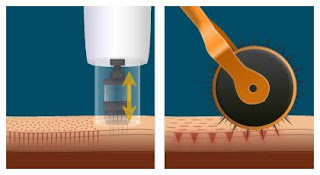Sustainable Self-Care
Regardless of your political beliefs, we all can make small changes that can help make our routine just a bit more sustainable and eco-friendly. The added benefit of it being more cost-effective just makes it that much better! So, here are some easy swaps you can make to make your routine a bit greener. Makeup towel instead of makeup wipes While makeup wipes are super convenient when traveling or at the gym, makeup towels can quickly add up and end up in landfills. A microfiber towel (I use the MakeUp Eraser) is an easy way to get even the most stubborn and waterproof makeup off your face and have your cleanser work on cleaning your skin, instead of trying to get makeup off. Cotton rounds instead of cotton pads If you have toner or eye makeup remover in your routine, you may go through a fair amount of cotton balls. A reusable cotton rounds is an easy way to still get these steps in your routine but without the damage that comes from growing, bleaching and throwing away cotton balls. C...





